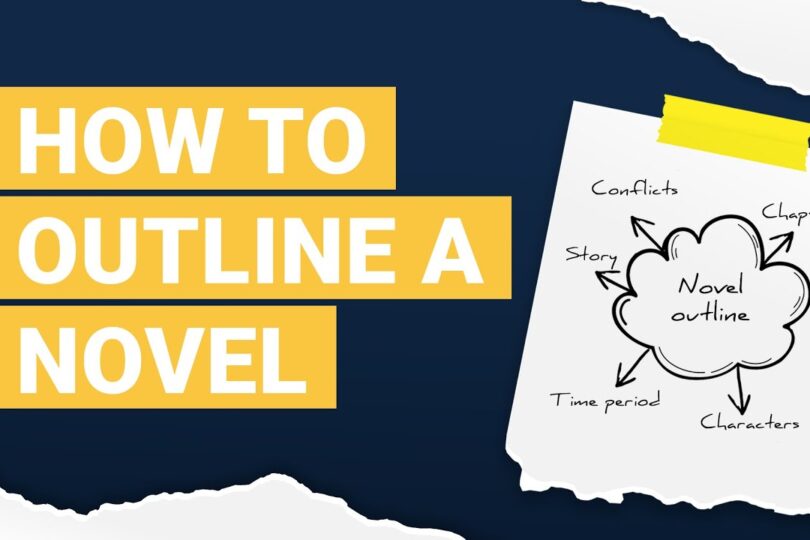When reading a textbook, it’s easy to get lost in a sea of details and miss critical ideas. This problem may increase if you’re short on time and can’t spare it to read the entire chapter. Fortunately, you can streamline your reading process by creating an outline. It will enable you to sift through the information strategically and focus on the essential points.
An outline is like a roadmap that guides you through the chapter, highlighting the key concepts and main ideas. By creating it, you’re crafting a study guide in advance, which can be helpful during exams. With a well-structured strategy, you won’t need to flip through your textbook frantically during exam time. So, if you’re wondering how to create your textbook chapter outline, here’s a step-by-step guide.Â
Table of Contents
Start By Reading the First Paragraph
To create an effective outline, start by reading the opening paragraph of the chapter carefully. This section usually provides a concise overview of the chapter’s content. It gives you an idea of the topics, the main characters, and the author’s point of view.
While reading the first paragraph, it’s crucial to take your time and read it slowly. Rushing through this section could cause you to miss important details, making it harder to connect the first paragraph to the rest of the chapter. Slow reading saves time in the long run and ensures you clearly understand the chapter’s key themes and ideas.
Study the Last Paragraph of the Chapter
After reading the opening paragraph, you should study the last paragraph of the chapter. This section provides a summary of the author’s main conclusions and ideas. By reading it, you’ll gain a deeper understanding of the chapter’s structure and how it fits into the broader context of the book.
Viewing the chapter as a story is essential, with the opening and closing paragraphs as the beginning and end. While there may be sub-points and turning points along the way, knowing where the story is heading will make it easier to write the rest of your outline in your own words. Moreover, if you have questions or uncertainties from the first paragraph, the last section may provide the answers you need.
Identify and List Subheadings
Next, you’ll have to identify and list the subheadings. While not all books will have them, non-fiction books, research papers, and textbooks often do. These subheadings provide a helpful organizational framework that you can use to create your outline.
Consider listing subheadings using Roman numerals in your outline if they are present. Think of these subheadings as a table of contents for your design, helping you to structure your thoughts and understand the flow of the chapter’s content.
Read and Analyze Topic Sentences
You’ll then have to analyze the topic sentences of every paragraph. These sentences are crucial because they provide a concise summary of the main idea presented in each section. While examining the topic sentences, you can fill in the rest of your outline and create a roadmap for the chapter.Â
Consider how each topic sentence fits into the broader narrative and what information it provides that will help guide your understanding of the chapter’s content. If it includes subheadings, you can link the topic sentences to these headings to further structure your outline. If not, you can write the topic sentences in your own words and use your interpretation to link the roadmap as the chapter unfolds.
Read the Last Sentences of Every Paragraph
This step is vital because it helps you identify the conclusion of each paragraph, which you should then write under the corresponding topic sentence or subheading in your outline. By doing this, you can ensure that each section supports the overall structure of the chapter outlined in the first paragraph.Â
As you fill in the last sentence for each paragraph, you should start to see how the chapter will unfold, why each topic sentence is essential, and how they fit together. If something in your outline is unclear, or if you feel that a particular paragraph is out of place, it is best to mark it with a star or some other symbol. Then, as you read the chapter more in-depth, you can focus on that specific paragraph and figure out how it fits in with the rest of the chapter.
Read the Chapter
Now that you have constructed the outline, it’s time to read the chapter thoroughly. However, while reading, you need to consider a few critical points. These include:
- Identify any key terms not included in the outline and define them. Then, place these terms in the corresponding paragraph in it.
- Include any characters that were not previously mentioned in your outline but showed up in the chapter. You must define their relationship with the rest of the topic.
- Mark any points of view you did not pick up during your initial read-through of the paragraphs and topic sentences. Be sure to note how the point of view evolves in your outline.
Once you have read the chapter and noted these critical points, review your outline to ensure it accurately reflects the chapter you just read.
Conclusion
With the above guide, you can simplify your chapter, outlining the process that creates a roadmap to help you achieve your goals. The more you review and revise your outline, the more effective and engaging your writing will be. Furthermore, if you outline your chapters, you’ll have a better chance of writing a clear, concise, compelling book, dissertation, or essay.
